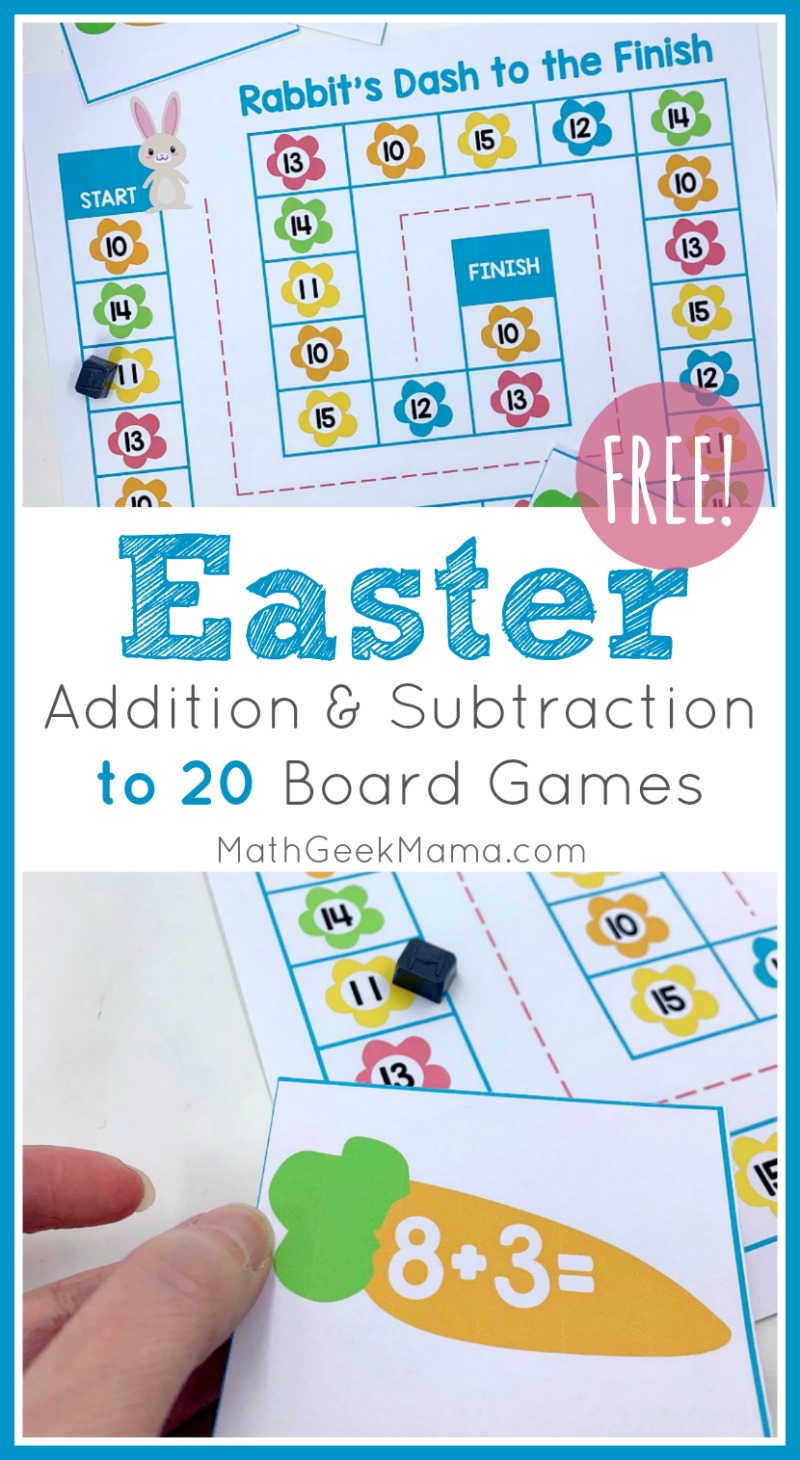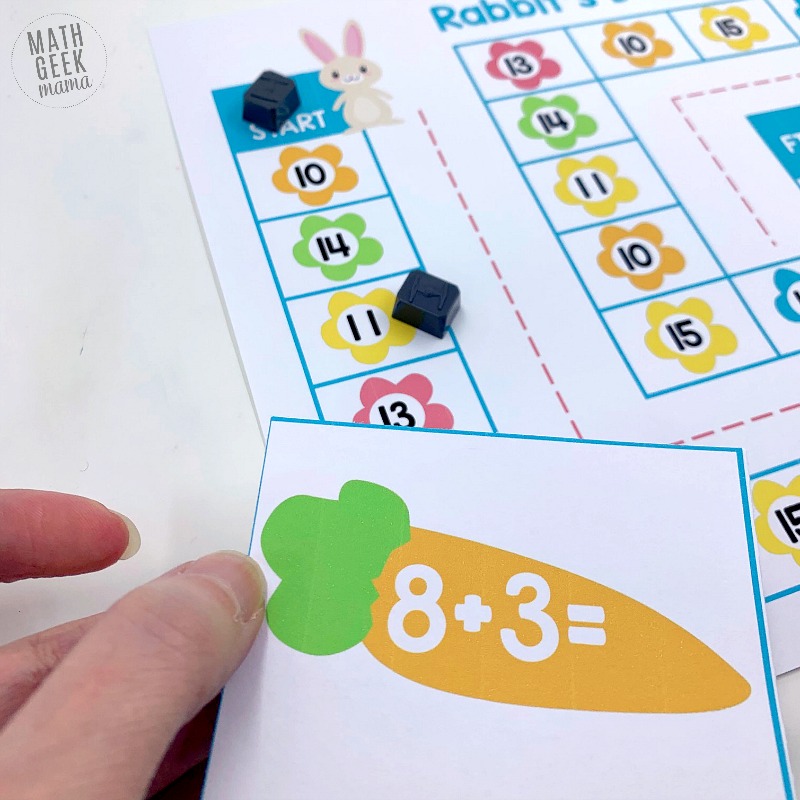Easter Math Games: Addition & Subtraction Within 20
Grab some game pieces and add some fun to your math time with this set of Easter math games! Set includes 2 different board games to practice addition and subtraction within 20.
If your kindergartner or first grader could use some extra practice with addition and subtraction to 20, you’ll love this adorable set of Easter math games. These board games can provide practice with mental math skills, using different strategies and will add some fun to your math time.

*Please Note: This post contains affiliate links which support the work of this site. Read our full disclosure here.*
Included in the Easter Games Download:
- Game directions
- Addition game board
- Addition carrot cards
- Subtraction game board
- Subtraction game cards
- Blank carrot cards so you can create your own addition or subtraction problems
Easter Math Games Prep:
These games are super easy to use and set up. Once you’ve prepped the materials, you can save it to play again and again!

- To begin, print out all the game boards and carrot cards (or just print one set if you only want to play one of the games)
- I suggest laminating the game boards and cards for durability, but that’s optional
- Next, cut out the carrot cards and mix them up well
- Provide some game pieces for all players and you’re ready to play!
*I would also suggest printing the carrot cards on card stock paper so they are not see through. Or you could print on scrap-booking paper so they have a cute design on the back.*
How to Play the Easter Addition & Subtraction Games:
The object of each game is to be the first to make it to the finish.

To set up the game, players place a game piece at start and place the carrot cards in a stack face down.
Note: There is a set of addition cards for the addition game board and a set of subtraction cards for the subtraction game board. Choose one or the other for game time.
Player one then draws a carrot card from the stack. They find the solution to the expression shown and move to the answer on the game board.
For example, below the answer is 11, so that player can move forward to the nearest 11 space on the game board.

If there are no spaces with the answer available, it is the next player’s turn, and they must try again on their next turn.
The first player to make it to the final space on the game board is the winner!
I hope this is a fun addition to your math time this April!












